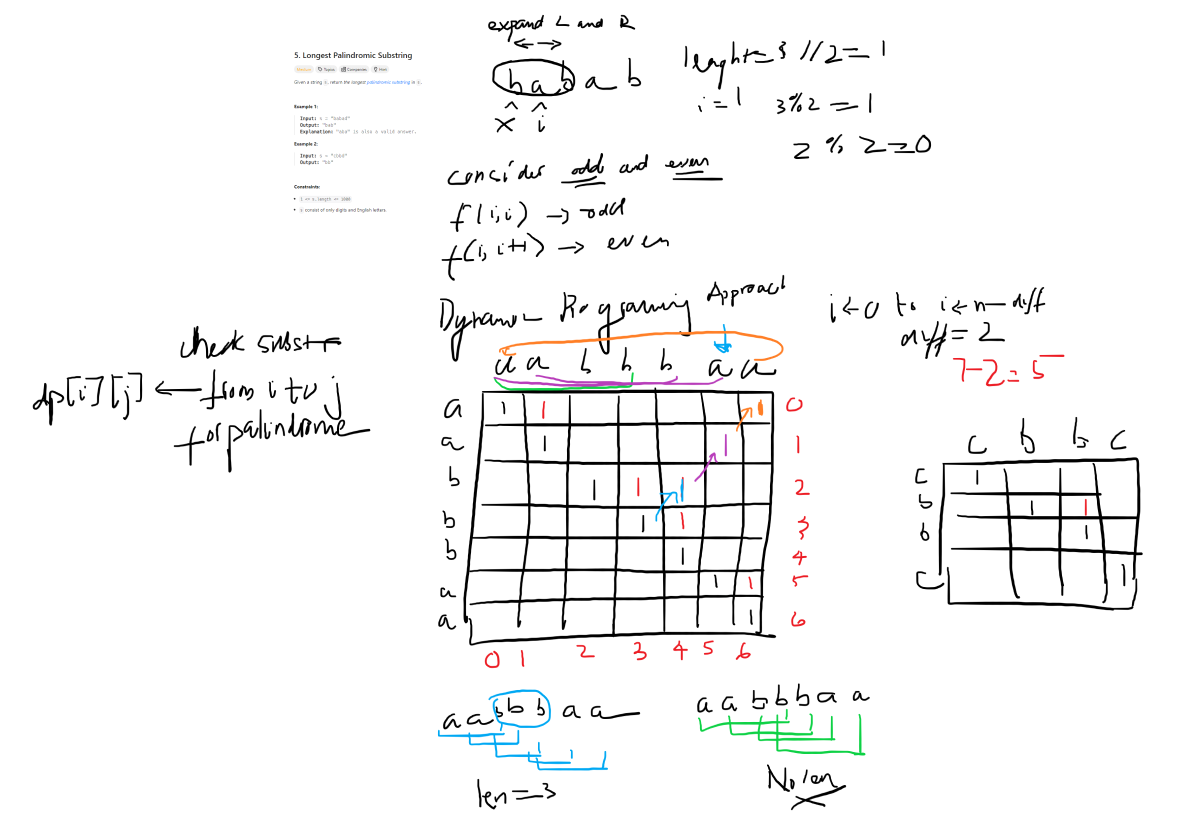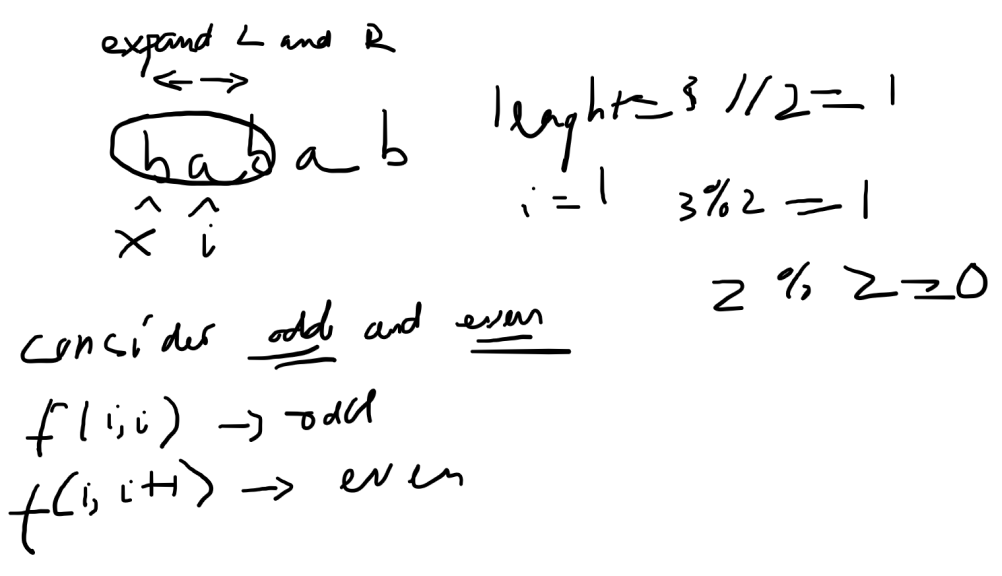Problem of The Day: Longest Palindromic Substring
Problem Statement
Given a string s, return the longest palindromic substring in s.
Example 1:
Input: s = "babad"
Output: "bab"
Explanation: "aba" is also a valid answer.
Example 2:
Input: s = "cbbd"
Output: "bb"
Constraints:
1 <= s.length <= 1000
s consist of only digits and English letters.
See Problem.
Intuition
The initial approach involves utilizing two pointers to expand around a center and checking for palindromes. Additionally, the strategy explores both even and odd lengths for palindromes in order to identify the longest one.
Approach
I employed a two-pointer approach to expand around each character in the string, considering both even and odd lengths for palindromes. The find_length function determines the length of the palindromic substring by expanding outward from a center character or between two characters. The result is updated whenever a longer palindromic substring is found during the iteration.
Complexity
-
Time complexity: O(n^2) as each character in the string is considered a potential center, and for each center, the expansion involves linear traversal in the worst case.
-
Space complexity: O(1) as the algorithm uses constant space to store variables like
result,max_length, andindices.
Code
class Solution:
def longestPalindrome(self, s: str) -> str:
N = len(s)
# Helper function to find the length of a palindrome by expanding around a center
def find_length(l, r):
while l >= 0 and r < N and s[l] == s[r]:
l -= 1
r += 1
return r - l - 1
result = ""
max_length = 0
# Iterate through each character in the string
for i in range(N):
# Calculate the length of palindromes with even and odd lengths
even = find_length(i, i + 1)
odd = find_length(i, i)
length = max(even, odd)
# Update result if a longer palindrome is found
if max_length < length:
max_length = length
half_way = length // 2
# Determine the substring based on even or odd length
if length % 2 == 0: # even
result = s[i - half_way + 1:i + half_way + 1]
else: # odd
result = s[i - half_way:i + half_way + 1]
return result
Cleaner Code
class Solution:
def longestPalindrome(self, s: str) -> str:
def getPalindromeLength(l, r):
while l >= 0 and r < len(s) and s[l] == s[r]:
l -= 1
r += 1
return s[l+1:r]
result = ""
curr_length = 0
for i in range(len(s)):
t1 = getPalindromeLength(i, i)
t2 = getPalindromeLength(i, i + 1)
t1 = t2 if len(t2) > len(t1) else t1
if len(t1) > curr_length:
result = t1
curr_length = len(t1)
return result
Editorial Code
Dynamic Programming
My notes to understand the DP approach

class Solution:
def longestPalindrome(self, s: str) -> str:
n = len(s)
# Initialize a 2D DP table with False values
dp = [[False] * n for _ in range(n)]
# Initialize the variable 'ans' to store the indices of the longest palindrome
ans = [0, 0]
# All single characters are palindromes
for i in range(n):
dp[i][i] = True
# Check for palindromes of length 2
for i in range(n - 1):
if s[i] == s[i + 1]:
dp[i][i + 1] = True
ans = [i, i + 1]
# Check for palindromes of length greater than 2
for diff in range(2, n):
for i in range(n - diff):
j = i + diff
# Check if the characters at positions i and j are equal and the inner substring is a palindrome
if s[i] == s[j] and dp[i + 1][j - 1]:
dp[i][j] = True
ans = [i, j]
# Extract the indices from 'ans' and return the longest palindrome substring
i, j = ans
return s[i:j + 1]
Final state of DP with example “babad”
| char | b | a | b | a | d |
|---|---|---|---|---|---|
| b | T | F | T | F | F |
| a | F | T | F | T | F |
| b | F | F | T | F | F |
| a | F | F | F | T | F |
| d | F | F | F | F | T |
Expand From Centers
class Solution:
def longestPalindrome(self, s: str) -> str:
def expand(i, j):
left = i
right = j
while left >= 0 and right < len(s) and s[left] == s[right]:
left -= 1
right += 1
return right - left - 1
ans = [0, 0]
for i in range(len(s)):
odd_length = expand(i, i)
if odd_length > ans[1] - ans[0] + 1:
dist = odd_length // 2
ans = [i - dist, i + dist]
even_length = expand(i, i + 1)
if even_length > ans[1] - ans[0] + 1:
dist = (even_length // 2) - 1
ans = [i - dist, i + 1 + dist]
i, j = ans
return s[i:j + 1]
